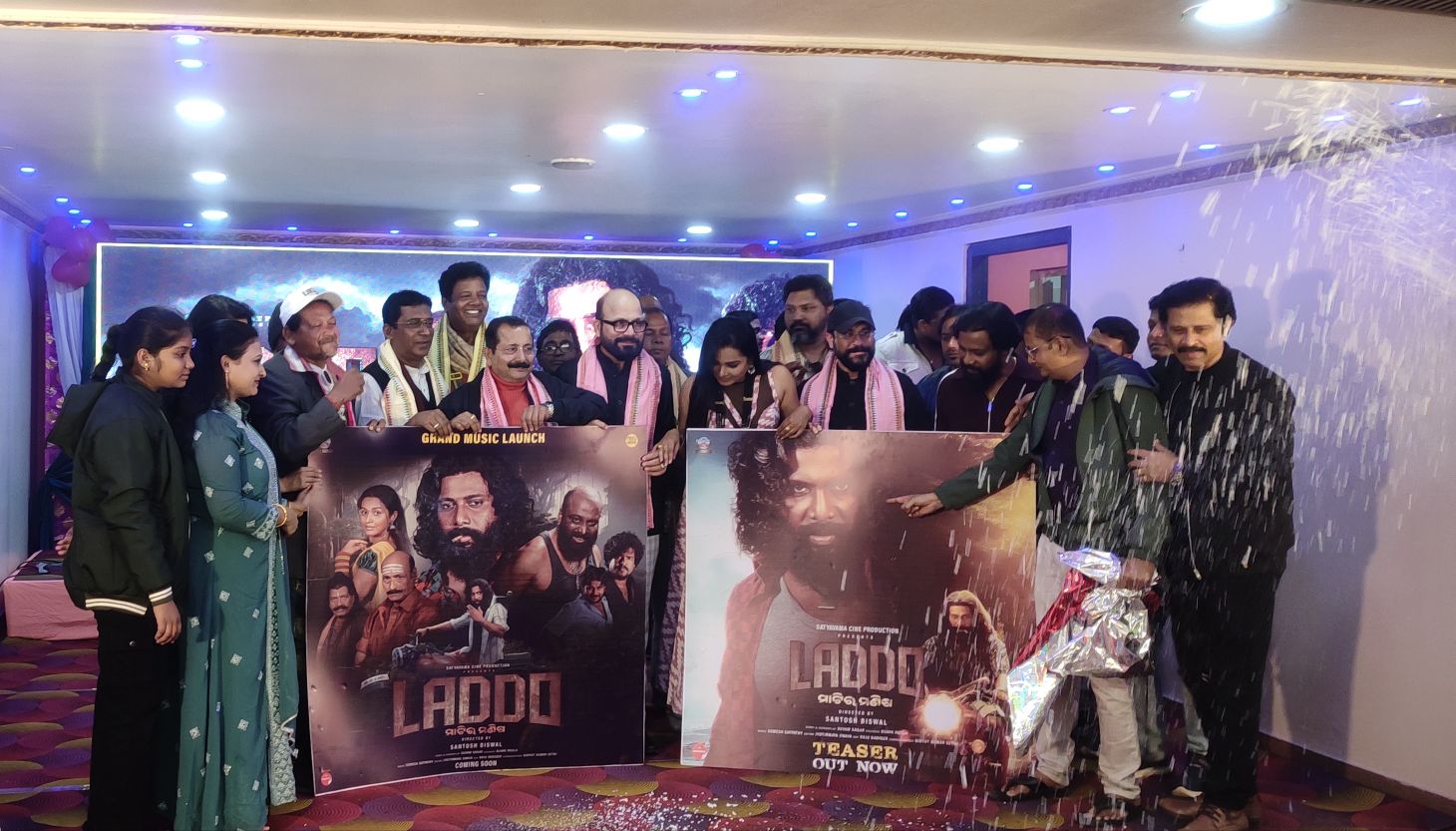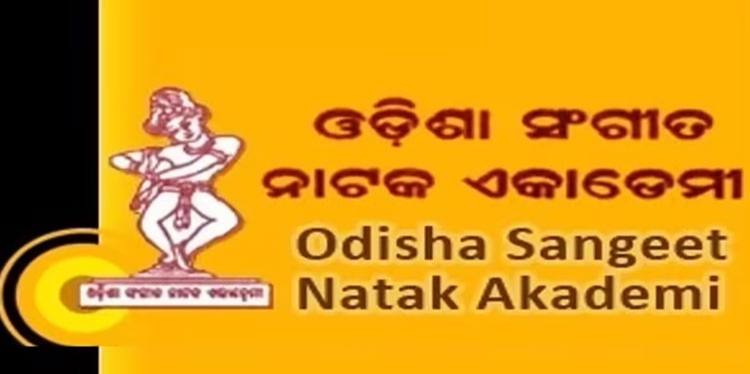Bhubaneswar: Eminent Odissi dancer and founder of ‘Angika’, a Cuttack-based Odissi dance institution, Guru Smt Shrabani Mitra hosted ‘Guru Poojan Utsav 2025’ at Rabindra Mandap in Bhubaneswar on Wednesday, a celebration steeped in devotion, artistry, and the age-old ‘guru–shishya’ tradition.
By the time the emcee of the evening Dr Srinivas Ghatuary (Milan) came onto the stage and invited the esteemed guests to light the auspicious lamp, the auditorium had filled to the brim.
Secretary of Odisha Sangeet Natak Akademi (OSNA), Dr Chandrasekhar Hota, renowned Odissi dancers Guru Dr Snehaprava Samantaray and Padma Shri recipient Guru Aruna Mohanty, executive director of Project Chhauni Smt Subhashree Mukharjee kicked off the evening by lighting the lamp.
What followed next left the audience overwhelmed. In a soul-stirring depiction of ‘Guru-Sishya’ tradition, dancers of Angika escorted Odissi dancer Guru Niranjan Rout to centre stage amid the blowing of conches.
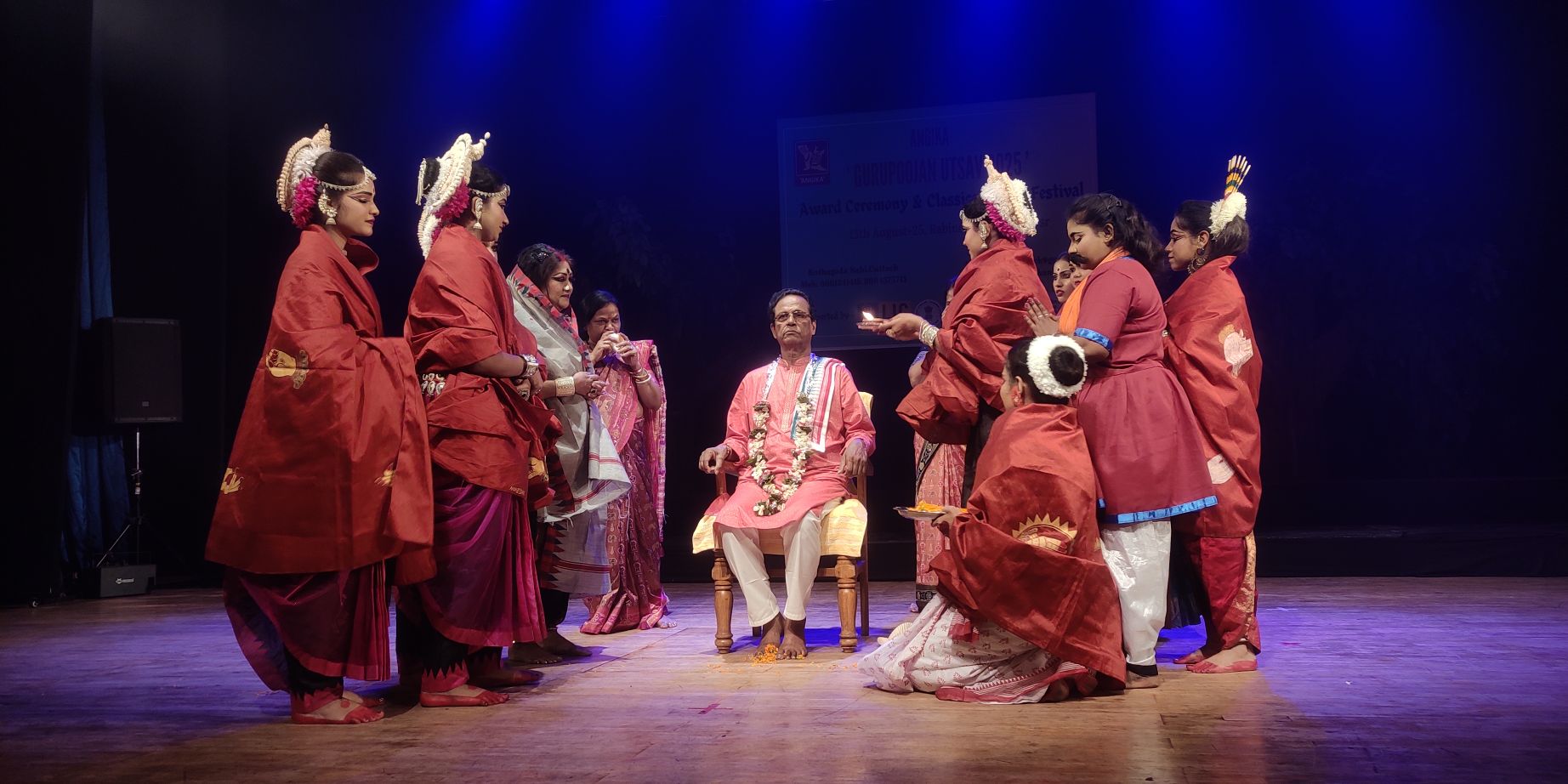
Seated in reverence, he was then worshipped in a traditional manner-showered with flower petals and offered arati, before being honoured with the ‘Angika Gurushrestha Samman’.
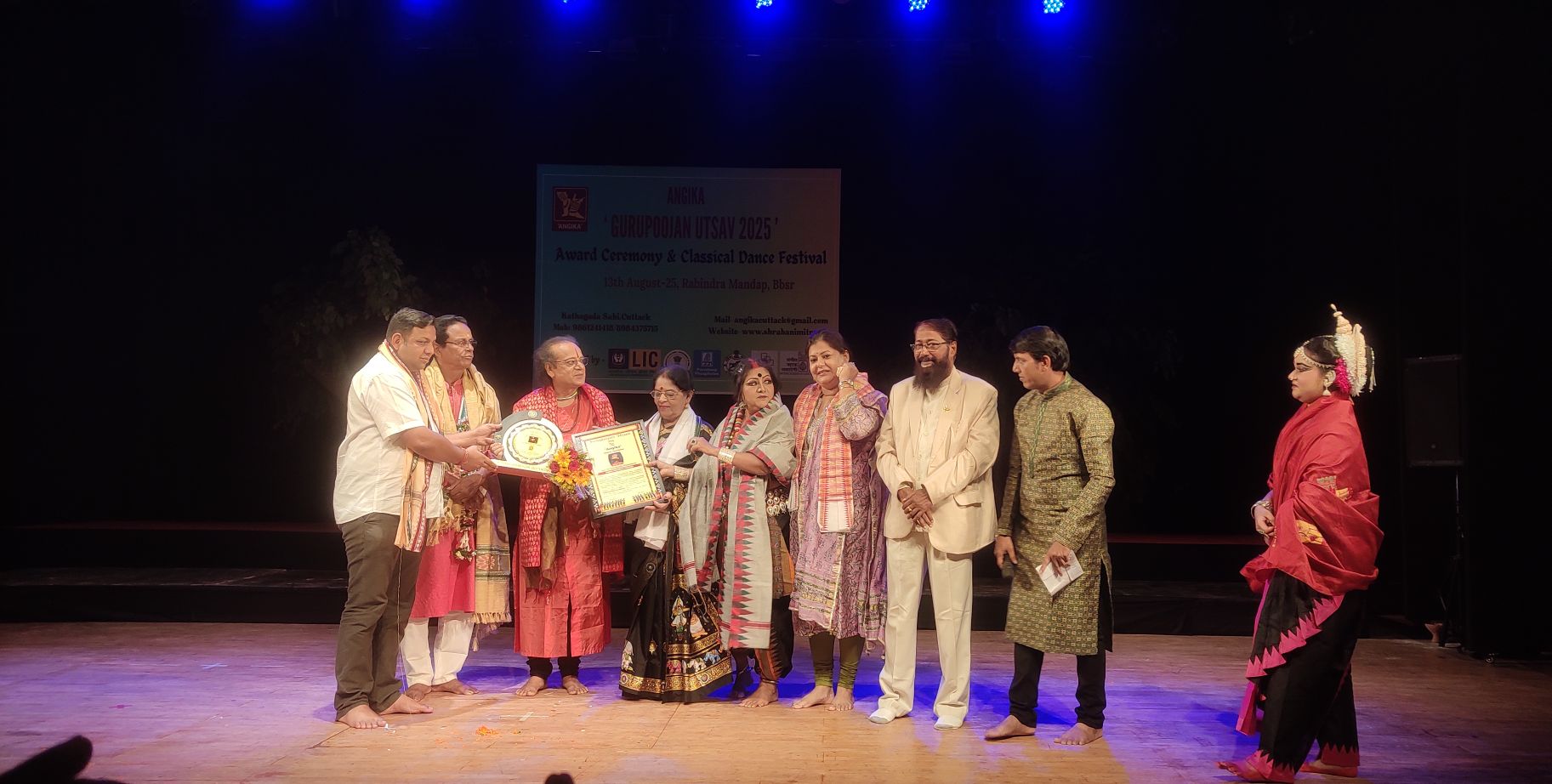
On this occasion, Kathak dancer Guru Ashimbandhu Bhattacharjee, Sitar player Guru Swapneswar Chakraborty and Odissi dancer Guru Smt Mamta Ojha were felicitated with ‘Angika Gurushree Samman’.
Setting the tone of the evening, eminent Kathak dancer Guru Ashimbandhu Bhattacharjee and his disciples Subrata Pandit and Avik Chaki, all from Kolkata, commenced their recital with a moving ‘Vivekananda Stuti’, offering prayers to Swami Vivekananda, who spread Hinduism and human philosophy all over the world.
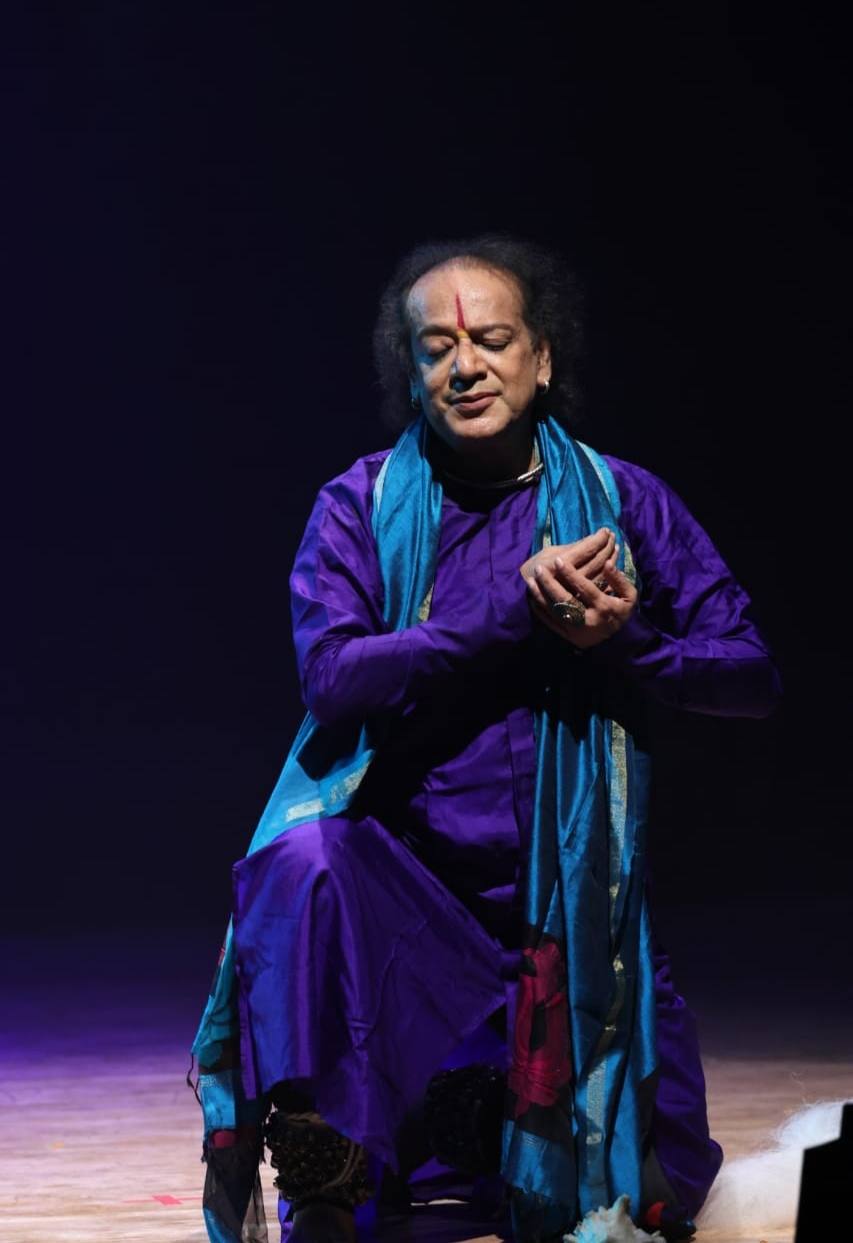
Here, the composer, Sarat Chandra Chakraborty, one of the disciples of Swamiji, paints Swamiji as ‘a thousand Suns’ and Murtamaheswar, the embodiment of Shiva.
Their next presentation was Dhamar, a pure dance item based on Raga Darbari (14-beat cycle), where different elements of Jaipur and Lucknow Kathak gharanas were nicely exhibited. From crisp amad to lightning-fast tukda, powerful paran and perfectly timed tihai, their artistry showcased both precision and flair, with neat footwork and dizzying chakkars that left the art lovers regaled.
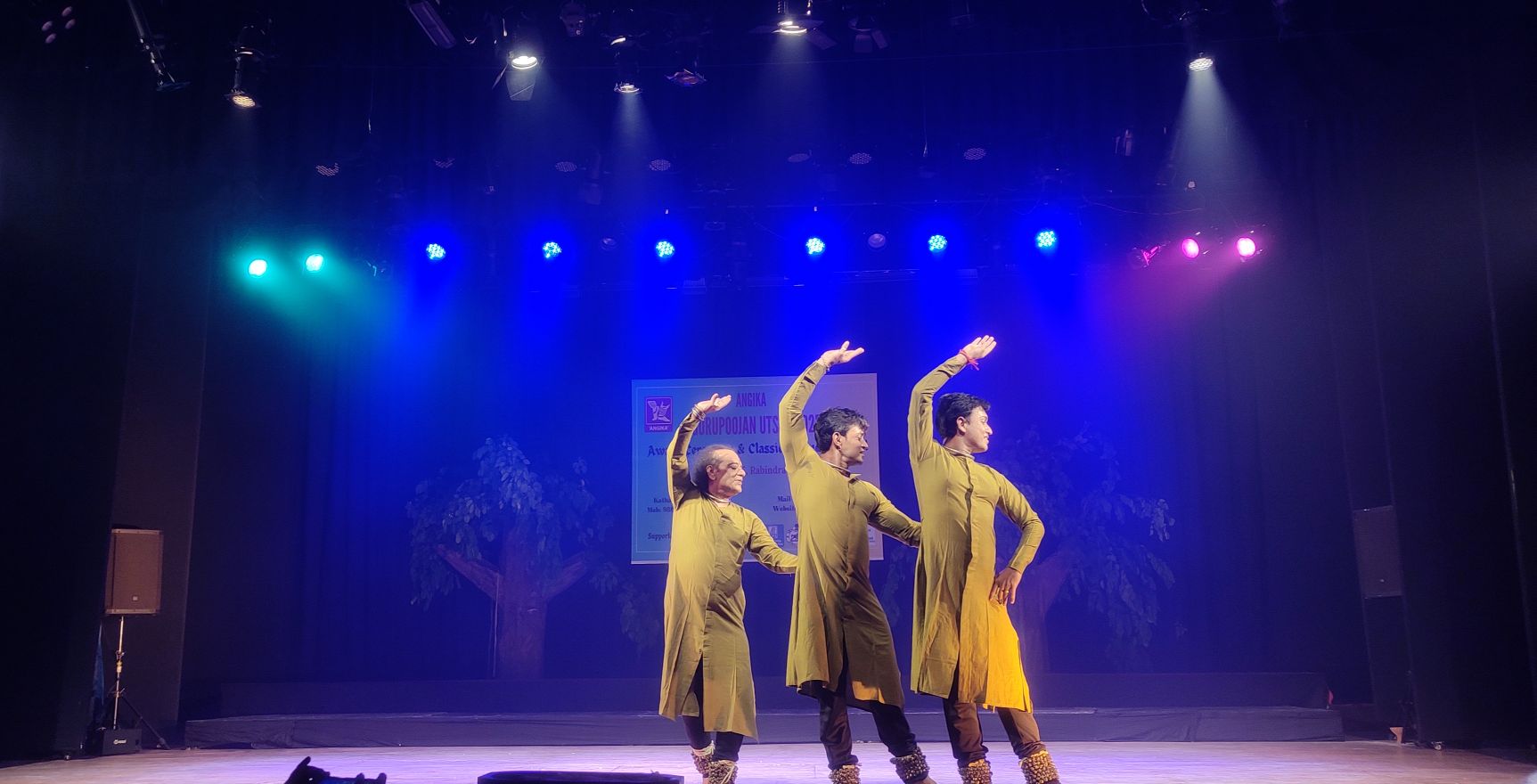
The trio wrapped up with an abhinaya on Guru Nanak’s bhajan ‘Sumiran Karle’, portraying Lord Krishna as the heart of bhakti.
Then came the centrepiece — a 50-minute Odissi adaptation of Rabindranath Tagore’s ‘Chandalika’, featuring 35 artistes, including six male performers, under the direction of Guru Smt Mitra.
For the first time, this celebrated story was staged in Odia and Odissi style, holding the audience in rapt attention from the first step to the final bow. A thunderous applause at the end of the production was a testimony to the success of the production.
Originally written in Bengali and translated into many languages, ‘Chandalika’ is popular around the globe and enacted in various dance forms.
A timeless tale of self-realisation, ‘Chandalika’ is a story of Prakriti, a Chandal village girl belonging to the lowest untouchable caste. On a scorching summer day, Buddha’s favourite disciple Ananda approaches her and asks for a palmful of water to quench his thirst. It is when Prakriti says that water from her hand would defile him, he preaches that all human beings are born equal and equally loved by the Lord without any social discrimination. This transforms Prakriti and she gives water to Ananda.
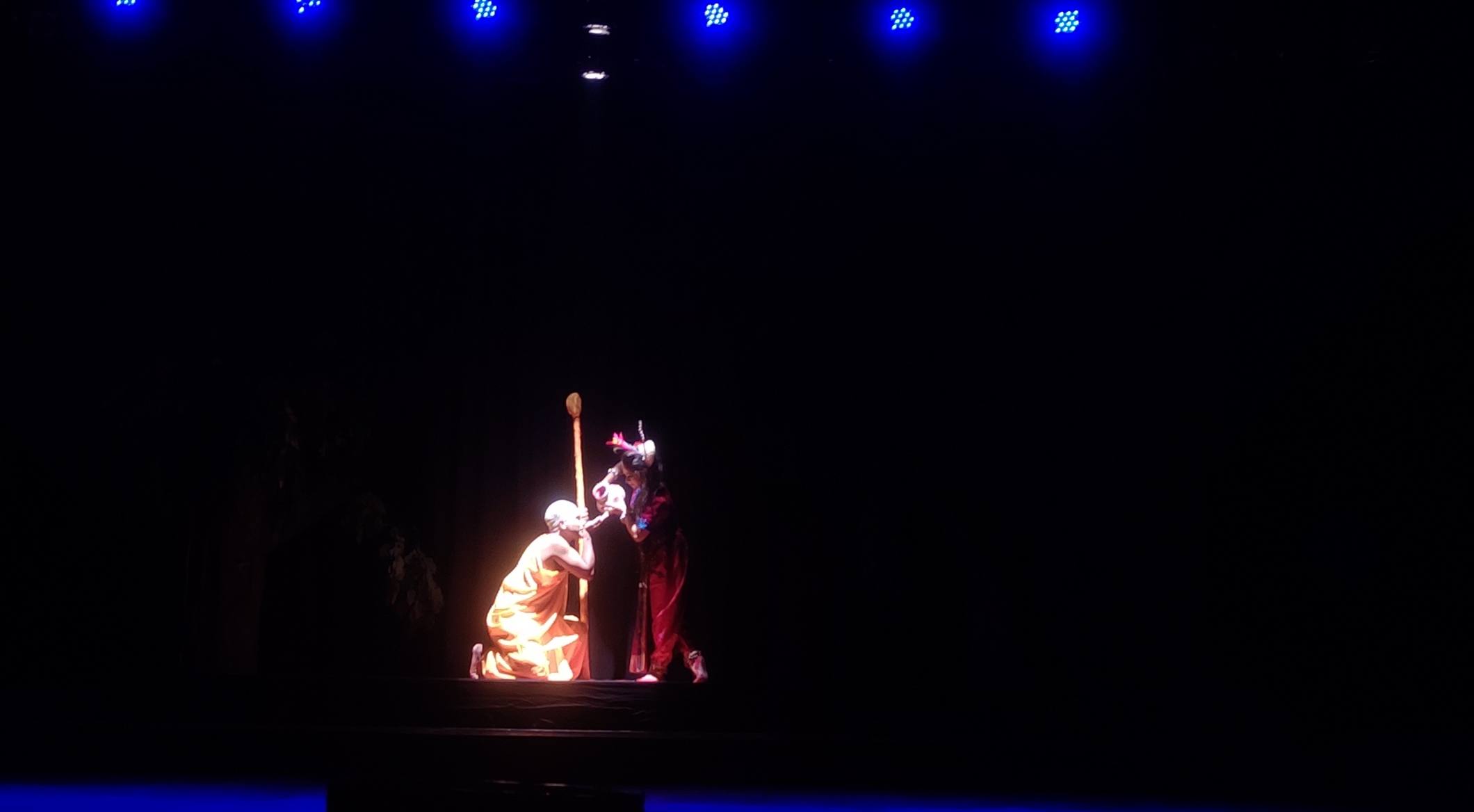
After quenching his thirst, he leaves the village. Longing for him, Prakriti implores her mother Maya, a practitioner of black magic, to bring him back.
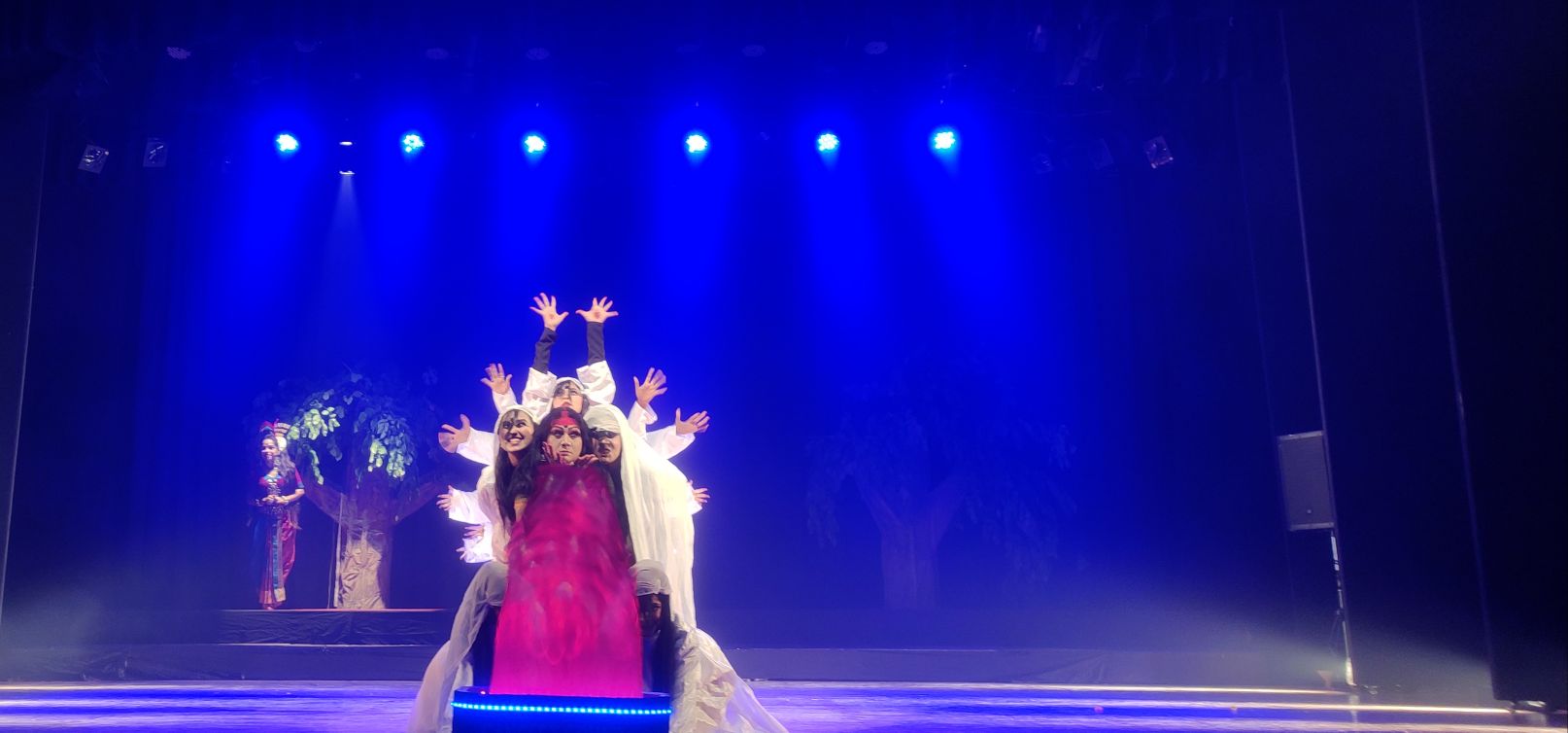
The spell works but at a terrible cost- Ananda returns weakened with face twisted. Overcome with guilt, Maya and Prakriti fall at his feet in repentance devotedly, and Prakriti understands that to love someone doesn’t mean to get him at any cost. True love is not possession but selflessness.
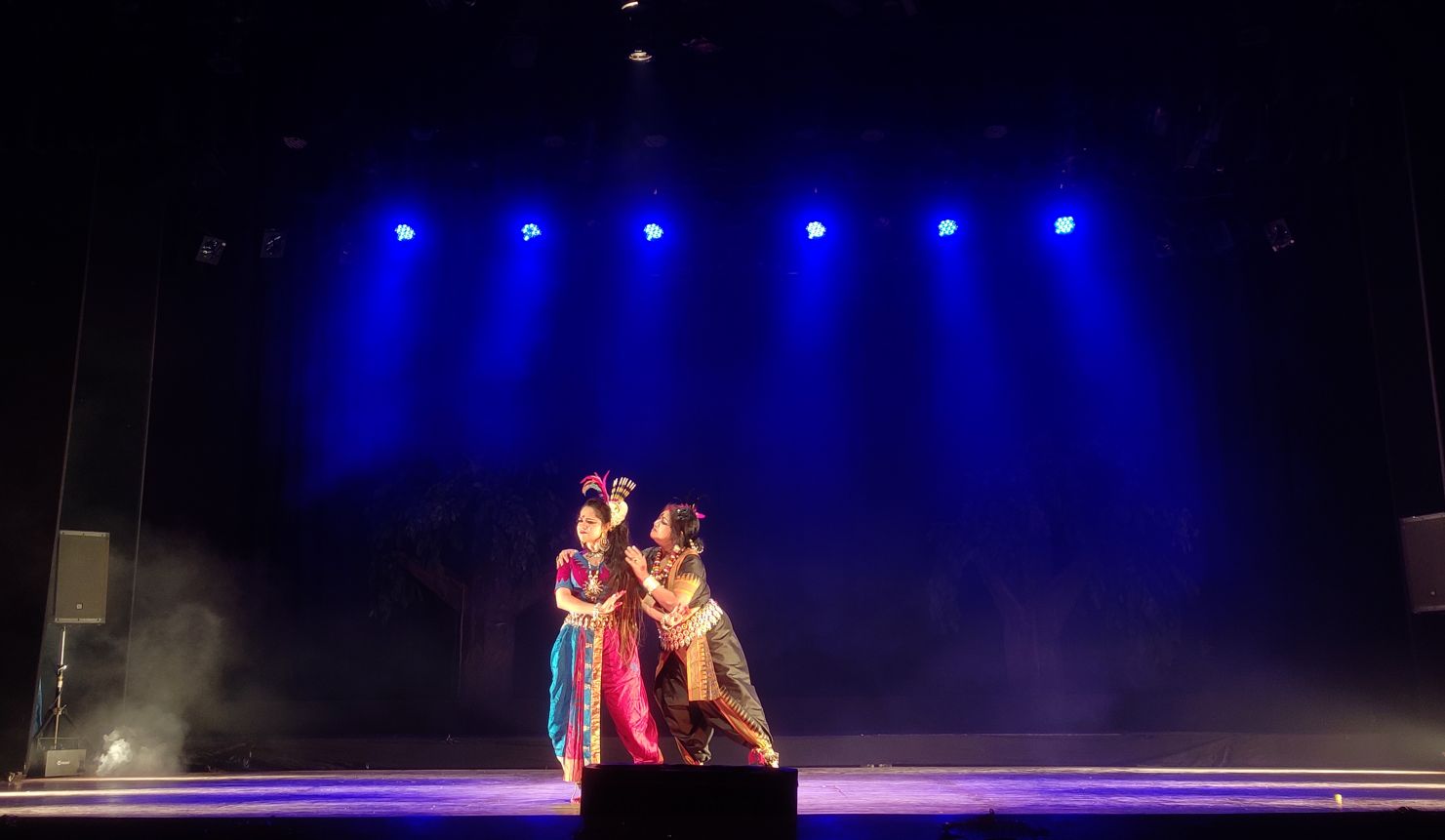
Guru Smt Shrabani Mitra and her daughter Mallika Mitra brought the characters of Maya and Prakriti respectively to life.
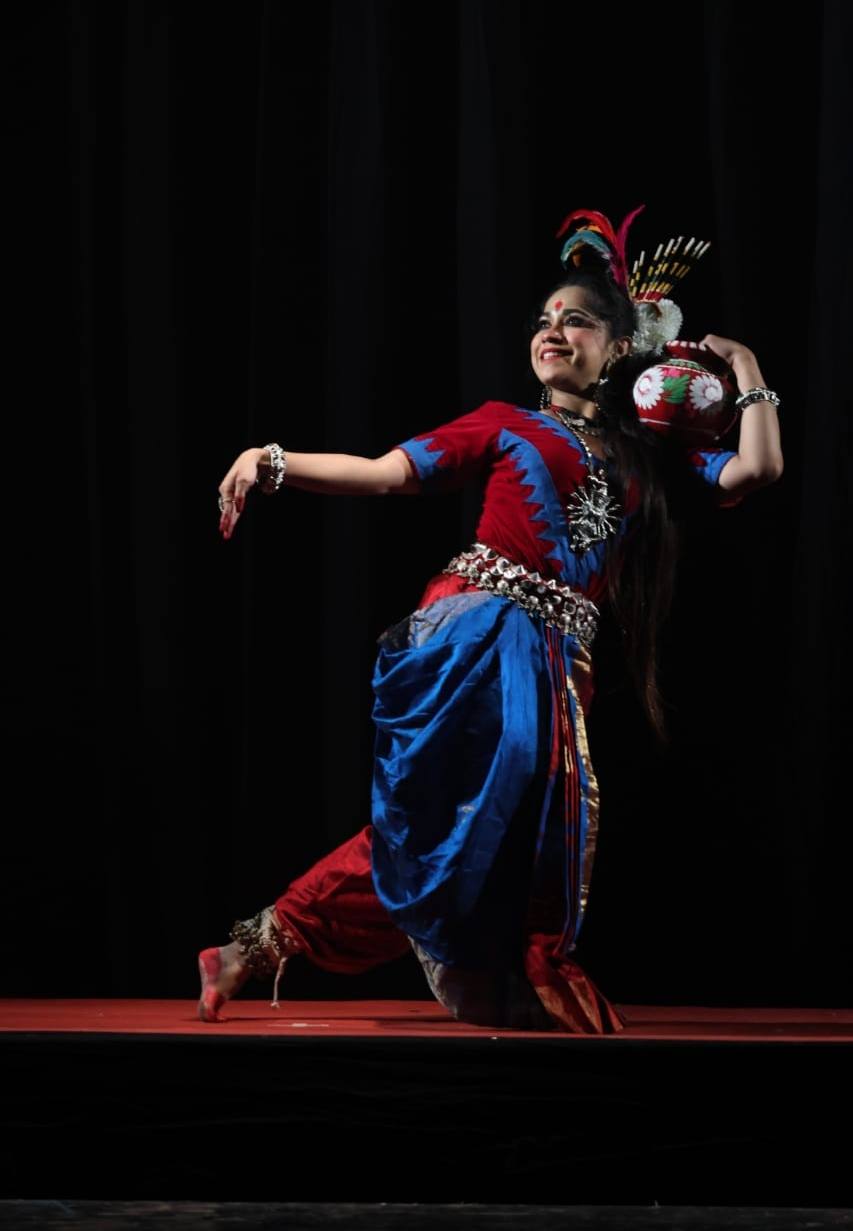
The production, marked by clarity, graceful stage presence, expressive abhinaya and seamless entry and exit of artistes, brought emotions alive, indicating the time and labour spent in rehearsal.
The visual poetry woven on the stage lingered long after the curtain fell. Particularly the rustic village scene where one girl mimicking a ‘Dhinki’ (traditional rice pounder) and another using it to separate husk from rice grains and two more winnowing grains. And, the use of Bengali and Odia folk dances and martial Paika dance added colour and vigour to the production.
The light design by Abhijit Biswal needs special mention as proper use of light created the desired mood on the stage.
Choreographed by Guru Smt Mitra, music composed by Swapneswar Chakraborty and rhythm by Guru Satchidananda Das, this production was a treat for both trained and untrained eyes.
It deserves to visit different festivals in and outside the state.



